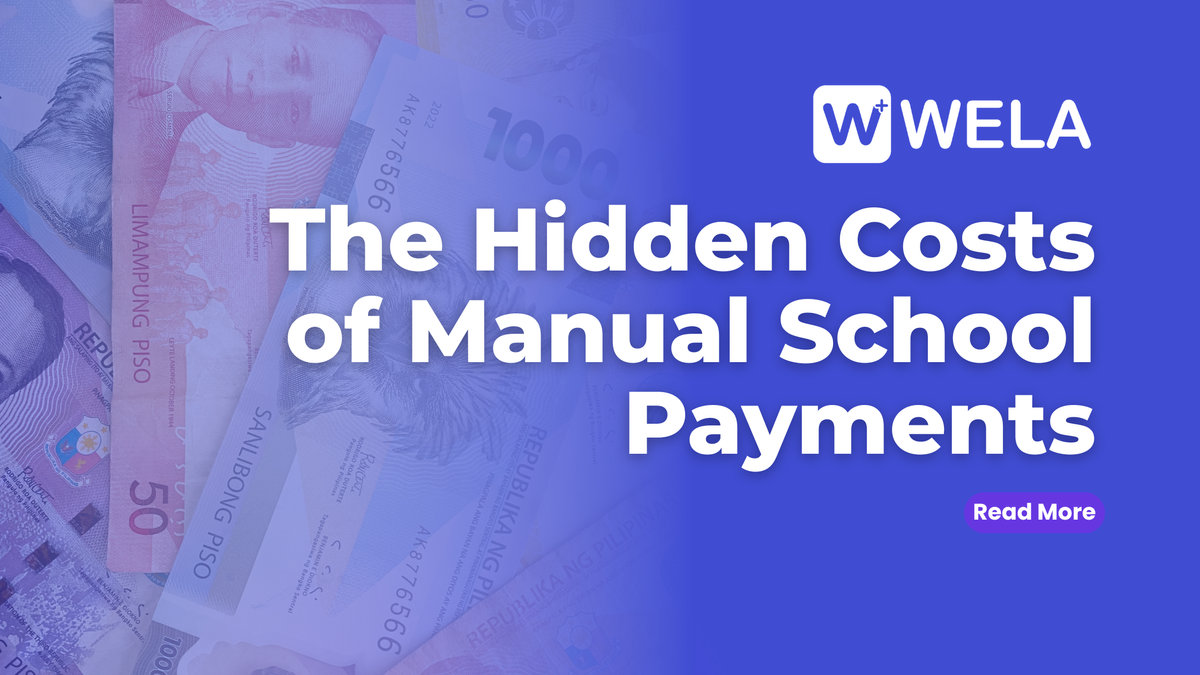Why Paying School Fees Is Still a Pain, And What That Means for Your School

Even in a digital age, many schools are still stuck in old ways of collecting payments. Whether it's enrollment season or regular monthly fees, traditional payment systems are causing major headaches, for parents and school administrators alike. Below, we explore the real problems schools face, backed by research and expert insights.
The Real Problems Schools Face During Payments
1. Time-Consuming, Error-Prone Manual Processes
Manual payment tracking via cash payments, paper receipts, or spreadsheets, is extremely inefficient. Administrative staff spend huge chunks of time reconciling payments, generating invoices, and matching payments with student accounts. According to others:
“Managing fee payments manually is a time-consuming, inefficient, and error-prone process.”
This inefficiency doesn’t just waste staff hours it also opens the door for errors in accounting.
2. Difficulty Tracking Payments & Reconciling Records
When payments are handled manually, tracking them becomes a burden. According to other companies, schools risk losing funds or misallocating payments because:
- It’s hard to match payments to the correct student/family.
- Errors in manual reconciliation are common.
Over time, this can lead to significant discrepancies in financial records.
3. Security Risks & Cash Handling
Handling cash and physical checks carries serious risk. There’s potential for theft, loss, or misplacement. Others observe that manual systems “expose schools to potential data breaches… misplacing money … theft, or fraud.”
Plus, physical cash requires more effort in safekeeping and auditing.
4. Late Payments, Poor Cash Flow, and Unpredictable Revenue
Delayed or late tuition payments affect a school’s cash flow. According to a case study in “Resolving Payment Processing Delays in Tuition Systems”:
- Technical glitches or outdated payment info (like expired cards) block payments.
- Bank delays or system failures can stall scheduled payments.
For schools, these delays can make financial planning difficult and lead to uncertainty in resources.
5. Limited Payment Options & Parent Inconvenience
Many schools still rely on limited payment modes. According to Smart School ERP, common challenges include:
- Parents needing to rush to campus to pay in cash
- Manual generation of fee receipts being “hectic and prone to errors”
- Difficulty supporting payment plans, scholarships, discounts, and multiple fee types (tuition, transport, uniforms, etc.)
This lack of flexibility frustrates parents and makes the payment process rigid.
6. Lack of Transparency and Poor Communication
Parents often don’t have a clear, real-time view of their payment status, dues, and history. This is exacerbated by manual systems, which don’t always provide timely or automated notifications. According to eTutor’s blog, manual fee calculation leads to “discrepancies in fee records” and “lack of transparency” for parents.
Without clear, accessible records, misunderstandings and disputes can easily escalate.
7. Infrastructure and Adoption Barriers for Digital Payments
Even when schools consider going digital, there are real barriers:
- Security concerns and lack of trust with online systems.
- Inadequate digital infrastructure, especially in more rural or under-resourced schools.
- Low digital literacy among parents or staff, limiting usage of e-payment platforms.
For many schools, shifting to a digital payment system isn’t just a technical change, it’s a cultural one too.
8. Cash-Based Models Undermine Transparency and Accountability
A study in Technology and Investment highlights that traditional cash and cheque methods lead to long queues, risk of handling large sums of money, and potential fraud.
Meanwhile, another school-level report found that non-payment or delayed payment of fees significantly disrupts school operations and budget planning.
When payment records are decentralized or manually maintained, accountability suffers.
9. Long-Term Impact: Missed Revenue & Operational Strain
Over time, these payment problems compound. Schools may face:
- Revenue leakage (money not properly tracked)
- Administrative burnout from repetitive, manual work
- Strain on parent relationships due to payment confusion
- Difficulty scaling payment processes or supporting modern financial plans (installments, discounts, etc.)
Real-World Evidence from Research & Case Studies
- In the Philippines, Pagay-Cierva (2024) evaluated a mobile-based school records + e-payment system (with SMS notifications) and found that digital systems significantly improve efficiency, reduce delays, and strengthen transparency. (RSIS International)
- According to The Journal, digitizing school payments helps save time and cut costs, plus ensures payment data is consolidated and trackable. (THE Journal)
- A study on fee management systems argues that automation addresses late payments, data gaps, and security risks — all common strains on schools. (neverskip.com)
Why These Payment Problems Demand a Solution
These aren’t just “small administrative annoyances.” The inefficiencies and risks in manual payment systems:
- Increase operational costs for schools
- Lead to cash flow uncertainty
- Frustrate parents and reduce trust
- Raise security vulnerabilities
- Prevent scalable, efficient financial management
If left unaddressed, these problems can distract schools from their core mission: educating students.
